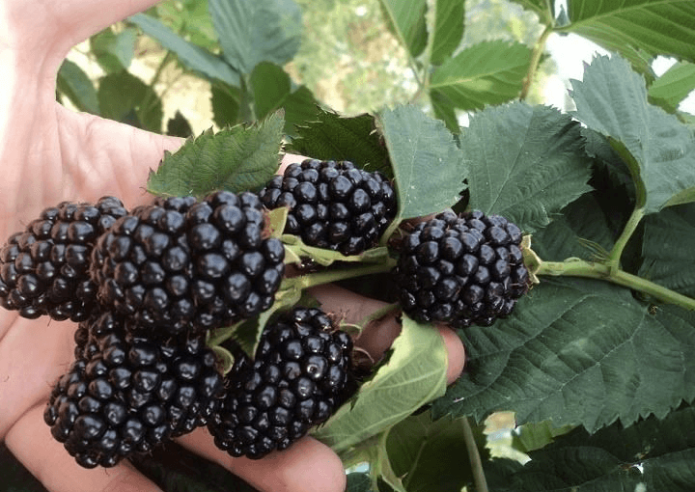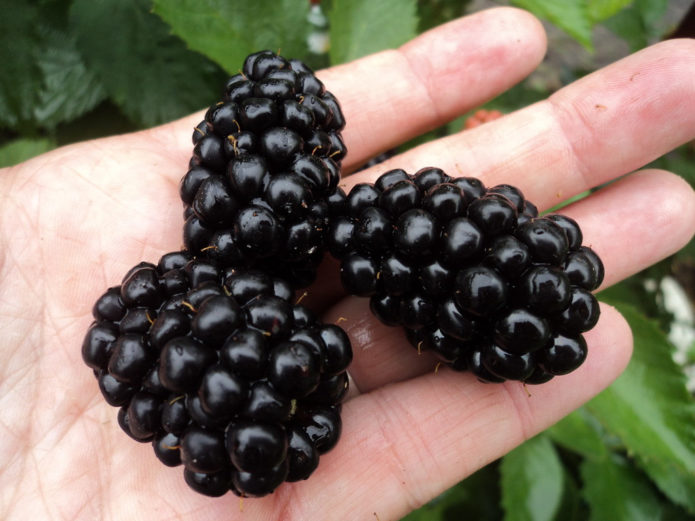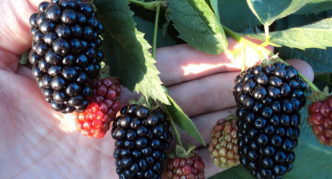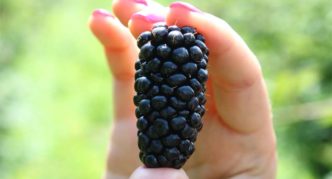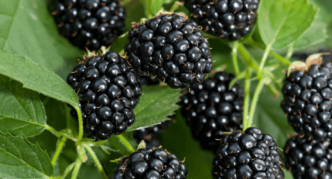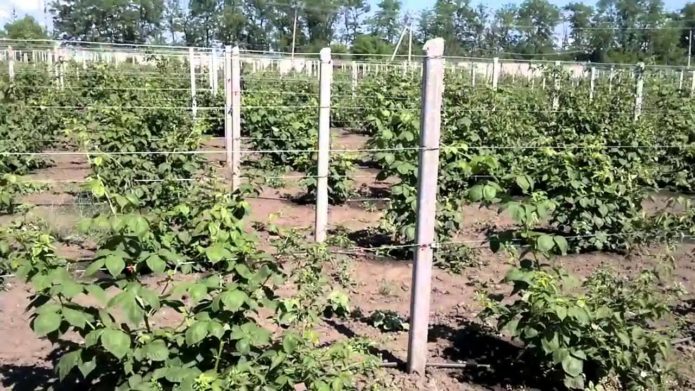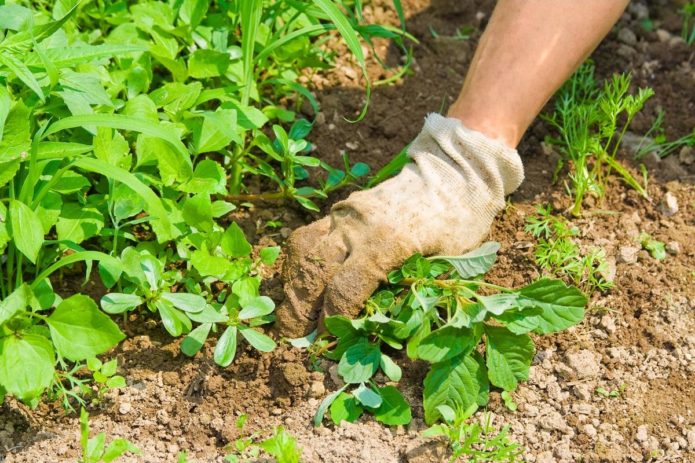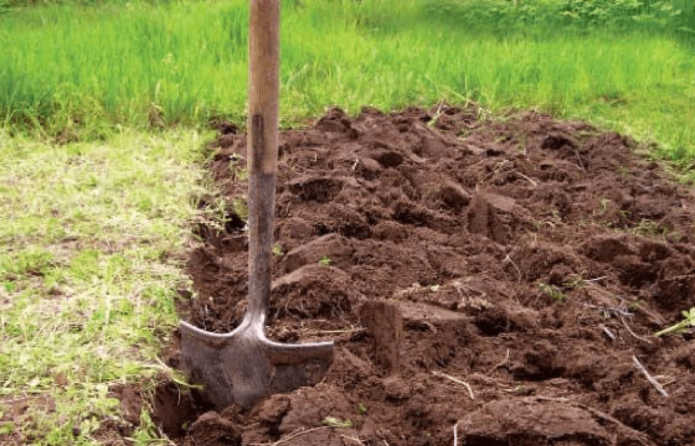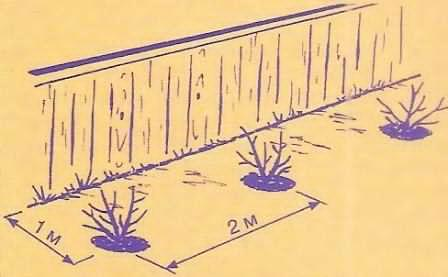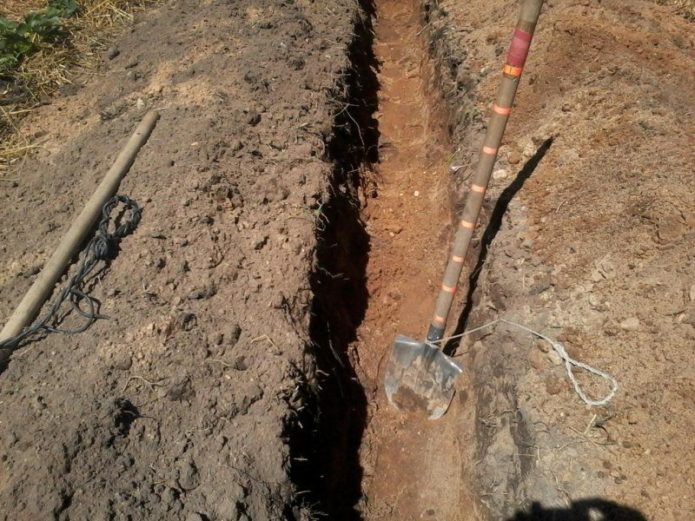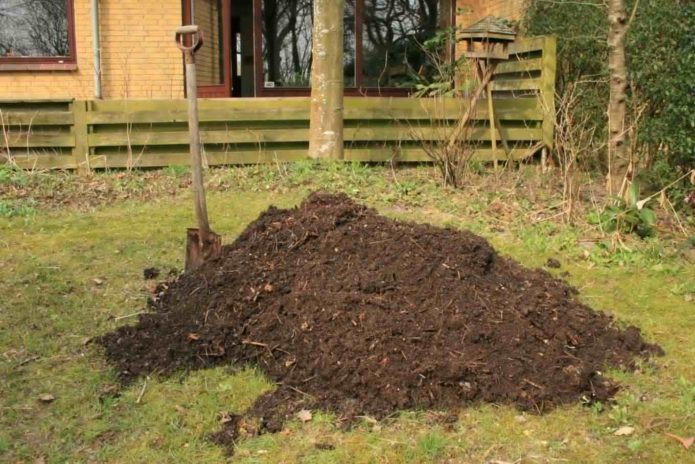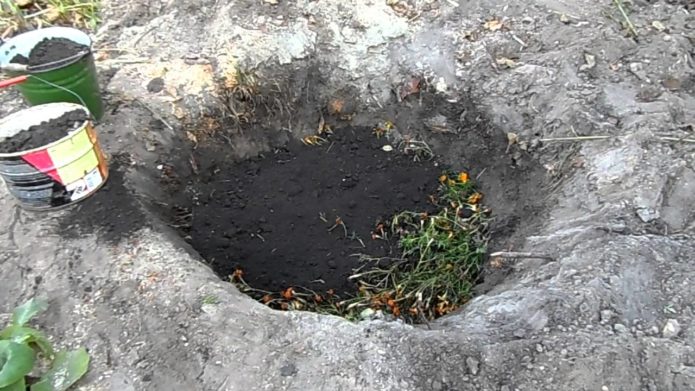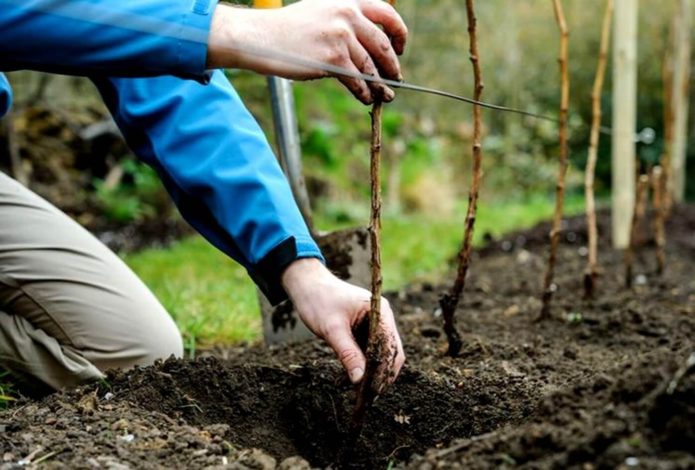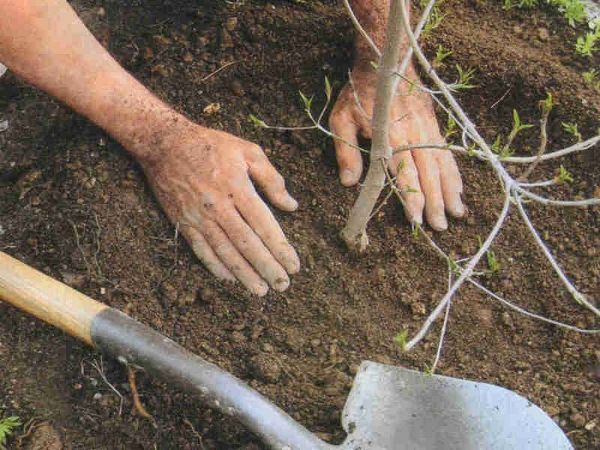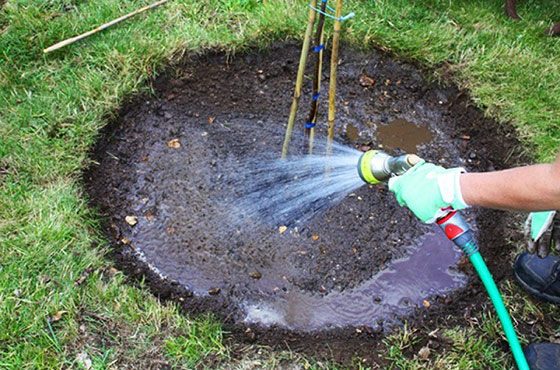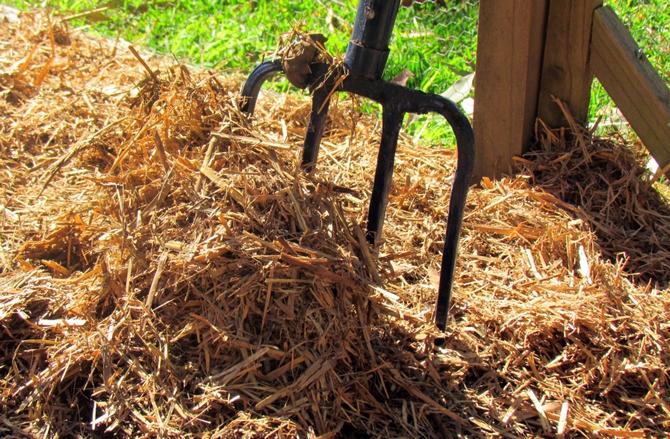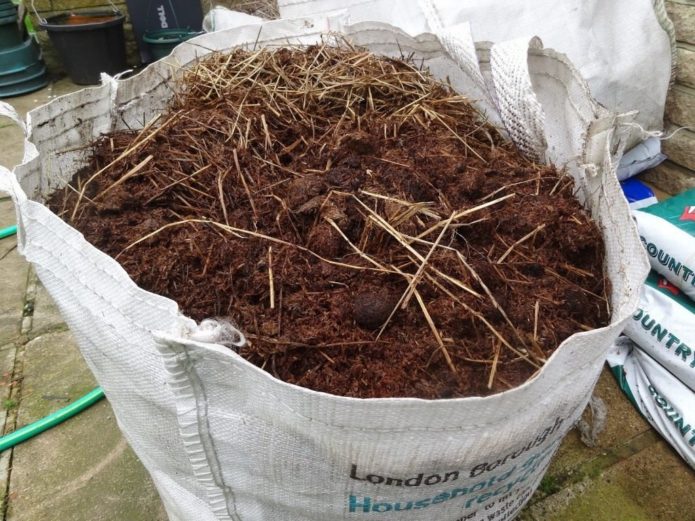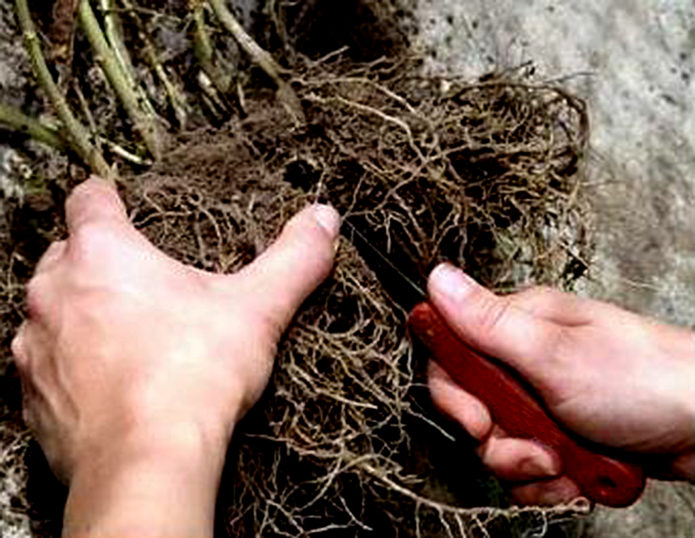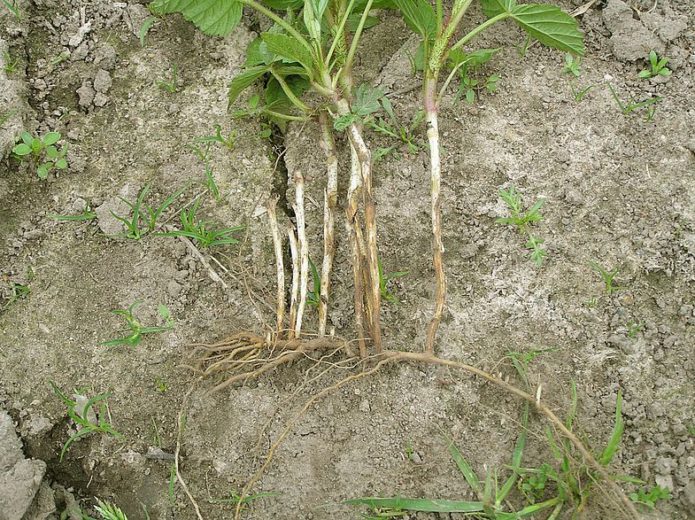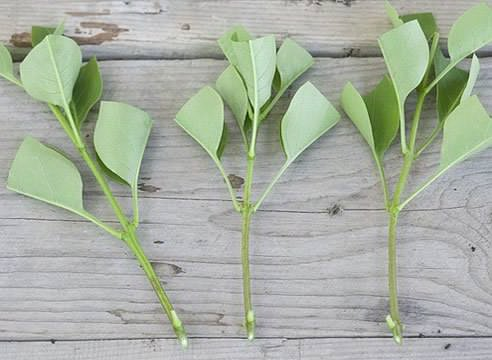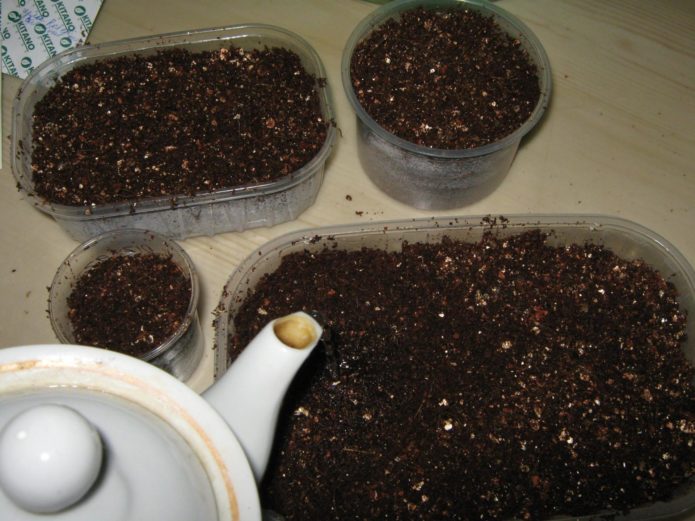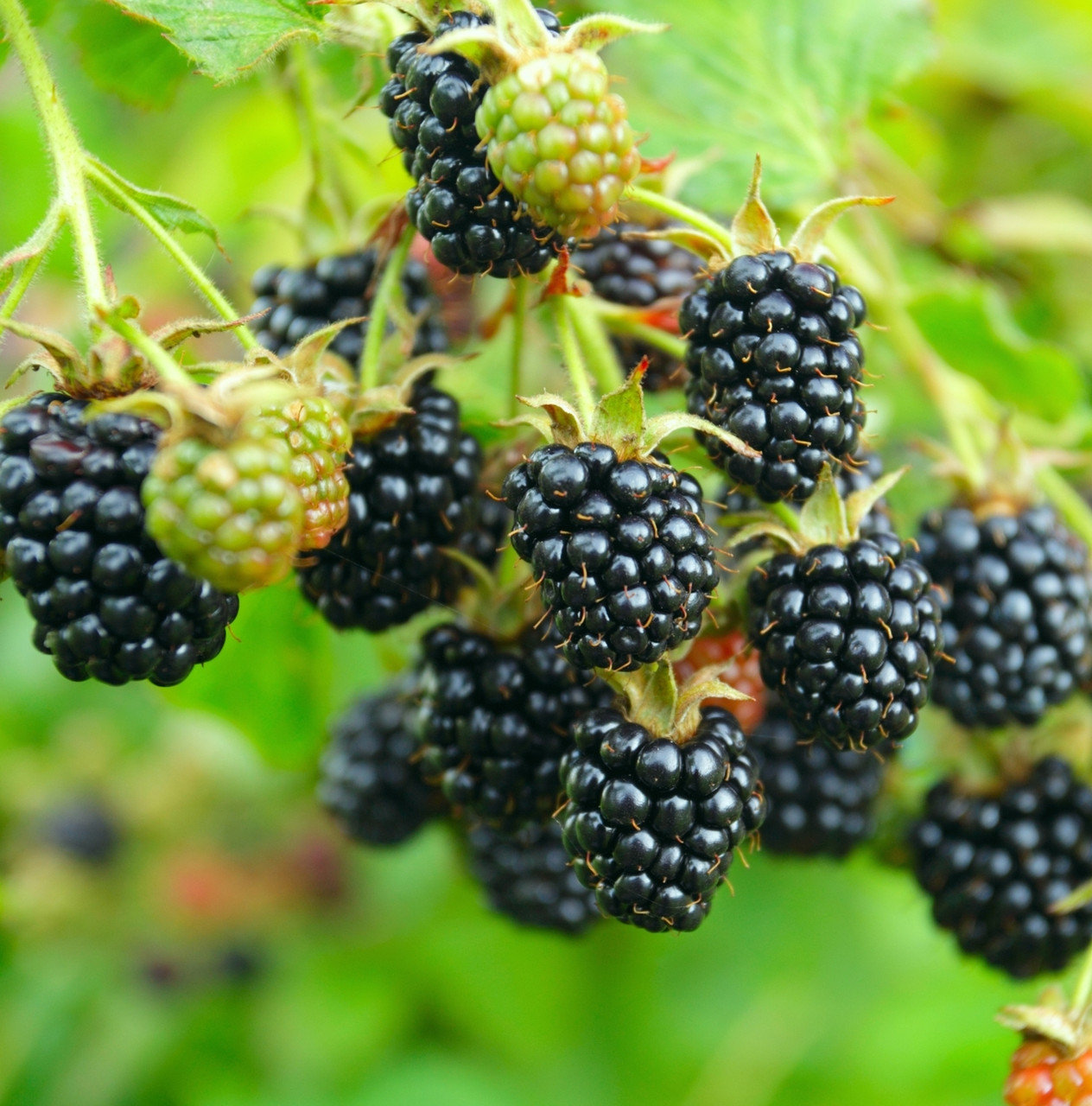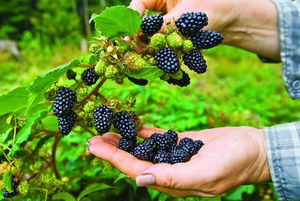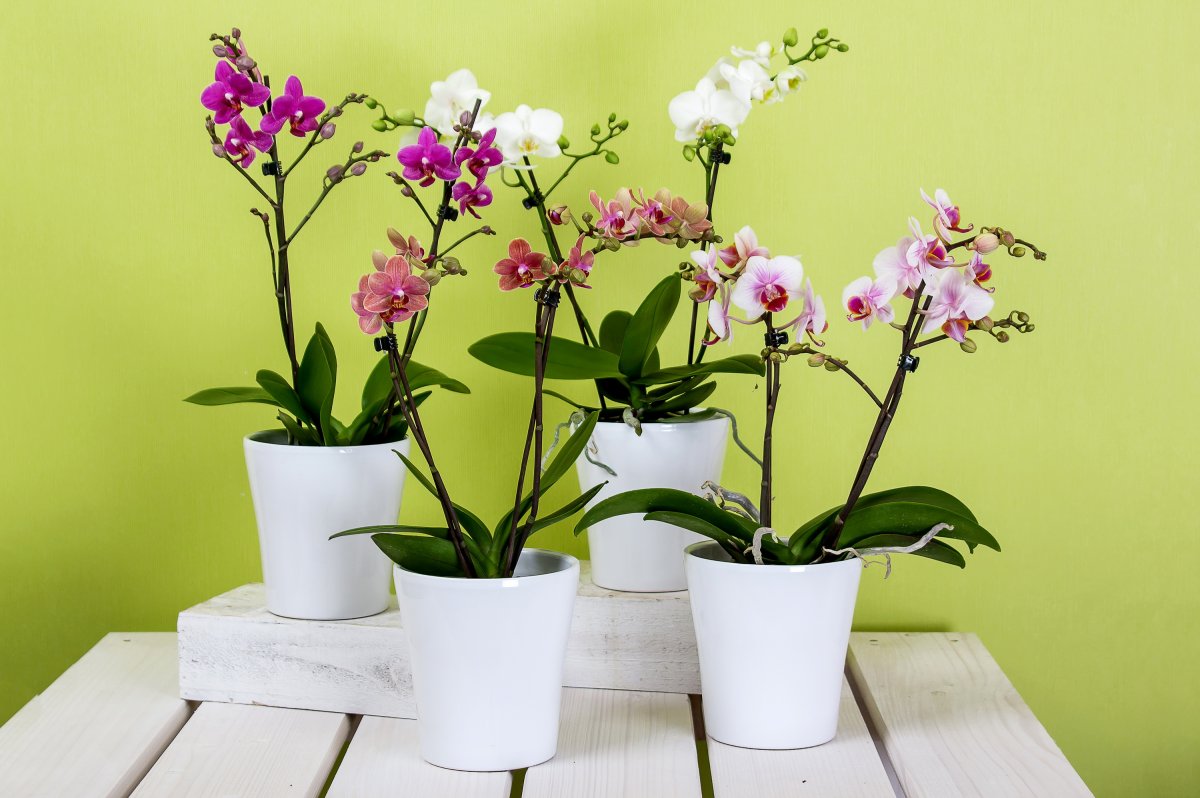For beginners or experienced gardeners who are faced with a new crop, it is useful to know some of the secrets of planting and transplanting it. Blackberry is no exception in this case. Her planting and transplanting, although they have some nuances, are not so difficult that even a person far from gardening cannot cope with this. Just consistent implementation of the points of the plan - and soon the blackberry will thank you with a good harvest.
Content
Varieties of blackberries
There are several varieties of cultivated blackberries.
Kumanika and dewdrop
Often in relation to blackberries use the word "kumanika". Kumanik is a blackberry with erect shoots 2-3 m high. But the name "dewberry" is possibly associated with the dew that covers the creeping lashes in the morning. In nature, thorny shoots of wild blackberries do not creep along the ground, but intertwine with each other, forming insurmountable obstacles. The curly lashes of cultural dewweeds, the length of which reaches 5 m, are civilized on trellises.
Table: differences between grassland and kumanika
| Characteristics | Rosyanka (curly) | Kumanika (bush) |
| Yield | Up to 20 kg per bush | Average 1 kg per shoot |
| Berry mass | Up to 12 g | Up to 4 g |
| Winter hardiness | Weak, the plant needs shelter | Good |
| Reproduction |
|
|
| The need for a garter | Vigorous bush, trellises up to 2.5 m high are required | Trellises up to 1.5 m in height are needed mainly to support shoots during fruiting |
| Thickening | Negatively affects yield | Slight thickening is allowed |
| The location of the root bud when planting | Above the ground | Deepened |
Repaired Blackberry
The remontant blackberry is especially worth considering. The property of remontability consists in the ability of a plant to bloom and produce a crop twice or repeatedly per season. The highlight of the remontant blackberry varieties is that if it is not mown for the winter, then both one- and two-year shoots will bear fruit next year. On the one hand, the yield increases 4 times (2 entries from shoots of different ages). But, on the other hand, the lashes should be carefully covered for the winter (this takes a lot of time), because this species does not differ in winter hardiness.
If, on the contrary, in the fall you mow all the fruit-bearing shoots, the hassle of winter arrangement of the bush disappears. However, next year new branches will grow, which will yield a harvest, but later.And if the remontant blackberry is not cut off in the winter and bears fruit twice, then the quality of the second harvest is usually worse, because the plant spends most of its energy on the first.
Thornless blackberry
There are no thornless blackberries in nature - this is the result of selection work. Thornless varieties are distinguished by their large size inherent in hybrids and excellent berry taste. Smooth branches are pleasant to work with. But thornless blackberries are very delicate - they freeze out in winter, therefore, they require shelter, but not simple, but with an air gap to avoid contact of condensate with branches. Even if the shelter warms up temporarily, it is necessary to ventilate so that the blackberry does not get burned.
In terms of yield, thornless blackberry varieties often surpass their thorny counterparts:https://flowers.bigbadmole.com/en/yagody/sorta-ezheviki-besshipnoy.html
When to plant blackberries
Weather factors, which play a decisive role for the normal survival of the berry, differ depending on the region. Therefore, the time gap between planting activities within our country can be up to six months.
Spring planting
Spring planting of blackberries is practiced in the northern regions and central Russia. After all, what is autumn, at least in the middle lane? These are long, rather cool nights, a constant threat of frost (it’s something for winter) and a short daylight hours - in such conditions, the blackberry will not be able to “grab” the ground with its roots. And early snowless frosts will lead to freezing of plantings.
Spring in the north, although it comes later, but lasts longer - mild heat and humidity become ideal conditions for the survival of blackberries.
Autumn planting
In the southern regions, it is preferable to plant blackberries in the fall. Why? Because usually southern autumn with warm weather and comfortable humidity is extended in time and the transition to winter occurs smoothly, without force majeure situations. For example, in central and northern Ukraine, blackberries are planted in October, in the south - in late October - early November.
But spring in the south comes somehow suddenly and immediately, imperceptibly turning into summer: it gets hot. Blackberries with a still weak root system experience a double load and often dry out not only, as they say, on the root - the buds lose moisture even faster.
Many gardeners believe that to prepare the shrub for winter, it is enough to create a shelter that protects the blackberry from frost. However, this does not guarantee a good berry harvest in the next season:https://flowers.bigbadmole.com/en/uhod-za-rasteniyami/ezhevika-uhod-osenyu-podgotovka-k-zime.html
Choosing a blackberry variety depending on the growing region
In the fertile climate of the southern regions, any varieties of blackberries can be planted - everyone will take over, grow and bear fruit. However, the mild southern winter is insidious - there is little snow, and all living things freeze under the gusts of the damp wind. Therefore, even in the south, blackberry bushes need to be covered for the winter.

In the southern regions, despite the warm winters, blackberry bushes also need shelter from the cold wind, before that the bush must be carefully rolled
In the southern regions, varieties with low winter hardiness grow well (for example, Natchez - withstands only -14 oC). The berry begins to ripen already in mid-June (for example, in the Black Sea regions of Ukraine), and the process continues until mid-July. It is an amazingly aromatic and sweet variety. Ripening in several stages is not entirely suitable for industrial cultivation of crops, but in a private backyard it is convenient.
In hot areas, such a feature of the variety as drought resistance is important so that watering does not become a test for the gardener. This criterion is met by the Thornfrey variety, according to the State Register of Breeding Achievements of the Russian Federation, heat-resistant and drought-resistant.
One of the first cultivated blackberry varieties was Thornfrey, which quickly gained popularity due to its yield, the complete absence of thorns and ease of care:https://flowers.bigbadmole.com/en/yagody/ezhevika-tornfri-opisanie-sorta-foto-otzyivyi.html
For the northern regions and Central Russia, the cultivation of early varieties of blackberries is practiced. For example, Karaka Black (hybrid), which blooms in the south in early to mid-May, in the north - half a month later. Its frost resistance is low - up to -17 oC, but the whips are plastic, it is convenient to lay them under a winter shelter.
Even for the Urals and Siberia, there are no significant restrictions on the choice of varieties:
- Abundant, ripening in August;
- Thornfree, giving up to 10 kg of berries from a bush;
- Black Satin is an unpretentious and fruitful variety.
It is noteworthy that the yield of European blackberry varieties cultivated in Ukraine, Belarus, northern regions of Russia, is calculated in tens of kilograms, and in Europe - 4-8 kg per bush. Here the benefits of winter shelters are clearly traced, which are not practiced in Europe - they say, the climate is mild. But flower buds are sensitive to even a slight drop in temperature.
Photo gallery: popular varieties of blackberries
- Natchez blackberries weigh 8-9 g
- Berries of the Karaka Black variety are long, similar to mulberries, the average weight is 8-10 g
- Blackberry Thornphy - drought tolerant variety
- Black Satin shoots can be up to 7 m long
Blackberry planting technology
Blackberries are a plant with a huge potential for vitality, capable of reproducing in all ways known in nature. It is worth protecting it from the main "enemies" - frost and excess moisture, as it will immediately thank you with a generous harvest of wonderful vitamin berries.
Seat selection
The choice of the site is made taking into account the characteristics of the blackberry:
- she is light and thermophilic;
- roots do not tolerate stagnant water;
- shoots, especially those burdened with berries, break easily.
Based on this, a place is selected:
- sunny - in the spring such a site will warm up faster than others; shoots will be strong, and the volume and quality of the crop are simply magnificent;
- protected from gusts of wind, which can break and confuse the whips (partly for this, the branches are fixed on the trellises);
- with a groundwater level of 1 m and deeper;
- raised so as not to be flooded by rain, flood waters;
- with loamy soil (ideally), but not calcareous (it is not only infertile, but also negatively affects the taste of berries).
It is convenient to plant bushes on the southern, south-western side of the building or along the fence, stepping back about 1 m from it to avoid shading and have free access from both sides. Open areas, surrounded at some distance by fruit trees or a forest protection strip, are also suitable.
Planting methods
Blackberries are planted in two ways:
- bush - implies planting several seedlings in one hole (2-3). This applies to plants with low shoot-forming ability, vigorous plants are planted one at a time. Novice gardeners are advised to obtain such information when buying blackberries (and it is advisable to buy from experienced people or in a nursery);
- tapered - for vigorous blackberries, which form many shoots.
Step-by-step instructions for planting blackberries
The process of planting a berry crop has a certain sequence:
- The place designated for planting is thoroughly cleared of perennial weeds - wheatgrass, bindweed, shepherd's purse, woodlice. In advanced cases, herbicides are used.
- If the site is not fertile black soil, its fertility increases in advance (in the fall - for spring planting, in the spring - for autumn planting): it is applied for every 1 m2 10–12 kg of humus, 20–30 g of potash fertilizers and 50 g of superphosphate, after which the soil is dug to a depth of 50 cm.
- The place (scheme) of landing is marked:
- between upright bushes (kumanika) in a row (ribbon) -;
- between creeping (dew) in a row - 2–2.5 m;
- with cluster placement - 1.8 × 1.8 m;
- in mother liquors (where bushes will be grown as breeding material) - 3 × 3 m.
- 2–2.5 m is left between the rows.
- Digging holes with a depth and width of 40-50 cm or a trench of the same size (the excavated earth is folded in piles with a step of 1 meter).
- The excavated soil is mixed with fertilizers:
- for each hole - 5–6 kg of humus or compost (this is about 0.5 buckets), 45–50 g of potassium fertilizer (for example, wood ash), 90–100 g of superphosphate;
- for the belt method, the prepared heaps of soil are mixed with fertilizers, later this soil is evenly distributed along the entire length of the trench.
- Planting pits, trenches are fenced off from the inside from the side of the neighboring site, garden, vegetable garden, flower garden. To do this, sheets of slate or other material are leaning close to the wall to the full depth of the pit, so that the creeping roots of the blackberry do not move to the wrong place.
- The pit (trench) is filled 2/3 with soil mixed with fertilizers.
- The mistake of many novice gardeners is that they cover the roots in one fell swoop and compact the earth after planting with chaotic movements, which causes the seedling to bend. The root lobe first spreads out along the ground inside the pit, and then gradually falls asleep with earth, while shaking the seedling slightly (this way there will be no voids between the roots, and when watering the plant will not settle much). Do not forget that the growth bud at the base of the kumanik shoot burrows into the ground by 2–3 cm (it is impossible to go deeper - the blackberry will begin to bear fruit later for a whole year). In dewweeds, this bud should rise above ground level.
- From above, the soil is compacted with a sole, pressed from the outer borders of the pit to the shoot.
- A furrow for irrigation is formed around the pit (along the trench). Watering is carried out at the rate of half a bucket of water per plant.
- The soil around the seedling is mulched with a layer of straw, peat or humus about 8 cm thick.
- The ground part of the blackberry is shortened to 35–40 cm.
Video: planting blackberries
Caring for blackberries after planting
Further blackberry care includes:
- weeding;
- watering (during the formation of flower clusters of berries, watering becomes more frequent);
- feeding with humus or compost (4-6 kg per 1 m2), pre-mixed with soil, every 2–3 years starting from the age of three;
- introduction of nitrophoska (20-30 g per 1 m2) in pauses between organic dressings, i.e. every year and a half;
- renewal of the mulch layer every spring after warming up the soil;
- June feeding with fermented manure or chicken dung diluted with water (1 liter of fertilizer per bucket of water).
Transplantation and reproduction of blackberries
A blackberry transplant (which is also a propagation of a bush) is carried out at the same time and under the same conditions as planting, namely:
- in spring - in the pre-growing season, while the buds are sleeping; acceptable for northern and regions and Central Russia;
- in autumn - in time it is the end of September - the beginning of October; held in the southern regions.
Spring transplant
Having planted a blackberry once, it is already easy to cope with its transplant, because the algorithm of actions is the same.In the spring, it is convenient to transplant blackberries by dividing the bush. The transplant is carried out with an earthen clod, so the planting hole should be slightly larger in diameter than when planting.
If you divide the bush, you can get from 3 to 6 viable seedlings at once. For this:
- The dug plant is disassembled into separate parts, each of which must have a root.
- The divided bush is planted in the usual manner.
Broken roots 0.3–1.5 mm thick will also be used: they are cut into fragments 6–10 cm long and buried 2-3 cm deep into the loose soil. Green shoots will appear in 1–2 weeks.
Summer transfer
Sometimes force majeure circumstances arise in which the bush must be transplanted in the summer. You can try, the main thing is not to disturb the blackberries in May (this is the time of active sap flow). June is a good time to transplant root shoots to a new location. They do it this way:
- Root shoots are cut off from the main root with a shovel.
- With a lump of earth, they are planted in a hole with fertilized soil.
In this case, the mother bush retains strength for the formation of the crop, and the shoots take root before the onset of cold weather.
Autumn transplant
A blackberry transplant in the fall is carried out a month before the onset of persistent frosts, when the plants take shelter for the winter. The apical layering method is used. The shoots of the bush form of this plant - kumanik - are especially difficult to bend to the ground, they are so disobedient and fragile. Lateral branches are especially difficult to give in, and in fact flower brushes are formed on them. To cope with the task will help:
- any heavy object - it is tied to the top of a branch and, under the weight, the shoot gradually bends to the ground;
- gradual tying of the lash:
- first, the lateral branches are slightly pressed against the main stem, fixed;
- after a few days, the fixing bandages are applied next to the previous ones, but already much tighter as the plant will allow.
Creeping blackberries are easier to propagate in this way.
Video: reproduction of blackberries by apical layers
Harvesting blackberry cuttings
Blackberries can be propagated by cuttings prepared independently. The method is suitable for any kind of blackberry, and lignified shoots are used. Cuttings for planting are harvested in the fall. This is done in this way:
- The shoot is cut off, which is divided into cuttings 40 cm long.
- Cuttings are buried in open ground to a depth of 15–20 cm or stored in a refrigerator, in a moist substrate (peat, perlite).
- In the spring, the "blanks" are removed from the storage area, darkened cuts are cut on both sides.
- Cuttings are buried to a depth of 2–3 cm in 15–10 cm increments in a mini-greenhouse (plastic wrap on wire arches); the cleanliness and moisture of the earth is maintained.
- When 2-3 leaves appear, the cuttings are dug up and shoots with roots are carefully broken off.
- Young sprouts are planted in pots or cups for growing.
- In the fall, the plants are planted in a permanent place, they take shelter for the winter.
Video: reproduction of blackberries by stem cuttings
Green blackberry cuttings can also be prepared, although their survival rate is low - less than 50%. Rooting occurs for about a week in a greenhouse with a humidity of 96-100% and +30 oC. Planting green cuttings in July:
- The top of the shoot about 20 cm long with 2 pairs of leaves is cut obliquely.
- The lower pair of leaves breaks off, the upper one is shortened by half.
- The planting material is kept in a root formation stimulator (Kornevin, Heteroauxin) for the prescribed time in accordance with the instructions from the manufacturer.
- Cuttings are planted in pots with a substrate (peat + earth + perlite, taken in equal parts).
Blackberry seedlings
Since blackberries are self-fertile, seedlings obtained from seeds retain varietal characteristics. The advantage of this not quite popular method of reproduction is that viral diseases are not transmitted to the offspring, as long as there are such, and the labor intensity is minimal. Seedlings will begin to bear fruit only in the 3-4th year, and this is a minus. But if you take seeds from such a bush, then the next generation will easily tolerate frosts down to -30 oC.
Blackberry seeds are hard-stone, so they need to be scarified or, in other words, to break the integrity of the shell. For this you need:
- Put the seeds in a cloth bag with coarse sand and shake it, or better rub it in your palms.
- Dip the grains in a cloth or gauze bag alternately in boiling water, then in cold water.
- After 2-3 dives, inspect the seeds - with a cracked shell, they are deposited, even whole ones continue to take "contrast baths".
Then the seeds are soaked for 2–3 days in rain or melt water. This is followed by the stage of stratification, or hardening. For this:
- The seeds are laid out on a layer of sand or peat in a 3 × 3 pattern.
- Sprinkle with a layer of sand or peat about 1 cm thick.
- Moderately moisturize.
- The container is kept for 1.2-2 months in a cool place, where the temperature does not exceed 2-5 oC (e.g. refrigerator, cellar).
- The condition of the substrate is checked weekly, if necessary, it is moistened with a spray bottle.
After stratification, the container is placed in a warm place (+ 20 oC) for germination. Seedlings in the phase of 4 leaves are “scooped up” with the ground and transplanted into open ground with a step of 10 cm. Subsequent care consists in weeding and watering. For the winter, seedlings are covered with leaves, hay, spruce branches or dense spunbond, and in the spring with an earthen lump they are planted in a permanent place.
By planting a blackberry near your house, you will undoubtedly receive great moral satisfaction. Also, you can expand your plantations for free by planting and replanting the culture in your favorite way.
